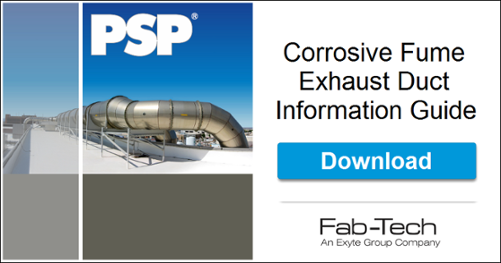5 Lab Design Criteria for the Future of U.S. National Labs
Governments around the world rely on their national labs to conduct research that will keep them at the leading edge of scientific and technological advancement.
Considering that U.S. national labs were developed during the middle of the 20th century and their management model is only recently showing signs of change, a major concern is that our national lab system may be many times inadequate to keep pace with modern day research initiatives.
"While the pace of innovation and the complexity of national challenges have accelerated, the labs have not kept stride...The federal government must reform the labs from their 20th century atomic-energy roots to create 21st century engines of innovation." [1]
/Lab%20Equipment%20Brookhaven%20National%20Laboratory.png?width=600&name=Lab%20Equipment%20Brookhaven%20National%20Laboratory.png)
In 2014, the Secretary of Energy established a Commission to Review the Effectiveness of the National Energy Laboratories. As directed by Congress, the Commission was charged with evaluating "the laboratories in terms of their alignment with the Department's strategic priorities, duplication, ability to meet current and future energy and national security challenges, size, and support of other Federal agencies." [2]
According to various analyses of the Commission's final report, it is widely held that any program to update or overhaul our national lab system should minimally include the following five major themes and/or design criteria:
- Improved ownership costs
- Increased flexibility
- Increased collaboration
- Improved safety
- Sustainability
Below, we'll examine each of these themes and explain how Fab-Tech's fluoropolymer coated stainless steel vent duct can play a significant role in aligning with these proposed national lab design criteria.
1) Ownership Costs
Without question, one of the most important and universal decision drivers in any project is cost; even in state-of-the-art facilities where equipment and technology budgets seem limitless.
All government laboratories have a set amount of money that they are able to spend each year on operations and lab equipment. Budgets for construction or expansion are established within a strict project process, and A/E submittals are "reviewed by various federal agencies to ensure the design addresses the programmed goals and expectations." [3]
One way in which A/E firms can deliver on these budgets and expectations is by using long-lasting and durable equipment with high-value and low ownership costs. With respect to corrosive fume vent duct systems, Fab-Tech's PSP® provides labs and process facilities with tremendous savings compared to FRP duct in the form of rapid installation, eliminated maintenance, and lowest ownership costs over the lifetime of the system.
/Fluoropolymer%20coated%20stainless%20steel%20duct%20collage%203.png?width=600&name=Fluoropolymer%20coated%20stainless%20steel%20duct%20collage%203.png)
PSP® fume exhaust duct does not require custom labor for installation; is easily field-modified; does not require the expense of routine protective coatings; can withstand heavy operational demands and regulatory requirements; and can be fully disassembled, re-used, and/or recycled in an end-of-use scenario without the hazardous waste disposal costs that other systems can incur.
3) Collaboration
/Research%20lab%20collaboration.png?width=288&name=Research%20lab%20collaboration.png)
One of the fastest growing trends in university and private sector labs is the use of collaboration and "open space." The goal of open laboratories is to provide researchers with improved access to shared resources and to one another for team-based initiatives. [4]
The Ames national laboratory, located on the grounds of Iowa State University, employs this concept and is thus far the only DOE laboratory to be operated and located on a major research university campus. "Many of the scientists and administrators at the laboratory also hold faculty positions at the University, and the laboratory has access to both undergraduate and graduate student talent." [5]
Much like incorporating flexibility into national lab design, creating open and collaborative spaces will also necessitate equipment that is highly adaptable, versatile, and capable of handling the demands of various forms of research.
Upon considering the potential for broader collaboration between national and university labs, safety will take on even greater significance as it is among the foremost concerns in university settings.
/PSP%20stainless%20steel%20duct%20is%20reusable%20and%20recyclable.png?width=204&name=PSP%20stainless%20steel%20duct%20is%20reusable%20and%20recyclable.png) While highly efficient and multi-functional buildings are one part of the sustainability equation, a truly sustainable lab design must also utilize long-lasting, durable construction materials that have minimal disposal costs and low environmental impact.
While highly efficient and multi-functional buildings are one part of the sustainability equation, a truly sustainable lab design must also utilize long-lasting, durable construction materials that have minimal disposal costs and low environmental impact.If you would like more information about PSP® corrosive fume vent pipe and duct, please feel free to download our general information guide below:

OR
Read More About PermaShield Fluoropolymer Coated Fume Exhaust Duct Here
Sources:
[1] From The Information Technology and Innovation Foundation, The Center for American Progress, and The Heritage Foundation, “Turning the Page: Reimagining the National Labs in the 21st Century Innovation Economy” (2013), p. 5, available at https://itif.org/publications/2013/06/19/turning-page-reimagining-national-labs-21st-century-innovation-economy
[2] https://www.energy.gov/labcommission/downloads/final-report-commission-review-effectiveness-national-energy-laboratories
[3] Section D from - https://www.wbdg.org/building-types/research-facilities/government-laboratory
[4] https://www.wbdg.org/resources/trends-lab-design
[5] https://www.ameslab.gov/about